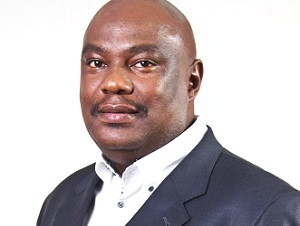
Following the unveiling of the ICT Gaps, USAASA's CEO, Zami Nkosi, has disseminated a discussion document for comment from licensed operators.
According to Nkosi, these inputs will prove critical to the finalisation of the National Strategy on Universal Service and Access, due for presentation to the Minister of Communications in the near future.
"As mentioned before, the Universal Service and Access Strategy is a Board project undertaken to research and design a comprehensive turnaround strategy for the Agency and Government as a whole in support of the National Development Plan (NDP). It is for all intents and purposes a direct response to a policy expression in the form of the National Development Plan, the New Growth Path, and a legal requirement in terms of section 82 (3, 4, & 5) of the ECA, 2005. It is an integral part of the USAF project planning process," he says.
"Given the magnitude of the access gap, it is crucial that government rope in the private sector as it maps out a solution to close the identified gaps."
The Agency, established in terms of the Electronic Communications Act of 2005, had previously reported on the project, its aims and some of its findings.
According to Board Chairperson, Pumla Radebe: "We have reviewed the legislative and regulatory framework of the country as well as the access gaps. It is these two sets of data that form the basis for the proposed programmes specifically designed to close the gaps."
This consultation with the licensed telecoms and broadcasting operators is the first of its kind since the inception of the organisation, as is the development of a comprehensive business case supporting the mandate of the organisation.
Operators formed part of USAASA's primary consultations at the onset of the project. The present engagement serves as feedback on findings and an invitation to the sector for inputs and comments on programme definition.
The National Strategy on Universal Service and Access seeks to achieve the following:
* Develop a Universal Service and Access Strategy that will inform the Agency and its stakeholders on programmes, policies and the concomitant modus operandi to ensure that ICTs are available, accessible and affordable to all citizens of the country;
* Identify, assess, qualify and quantify access gaps with a view to review implementation models for achieving digital inclusivity against predetermined indicators;
* Position the mandate in the greater ICT landscape and benchmark it against international norms and standards;
* Advise on the optimal operational arrangement to deliver on the strategy and the type of implementation plan required to bridge the divide;
* Position the Agency as the facilitator of universal service and universal access programmes and projects in the country; and
* Ensure co-ordination of universal service and universal access programmes and projects in order to address the lack of co-ordination that characterises the current scenario.
Interested parties can access the discussion document in the Agency's download centre at www.usaasa.org.za.
Share
USAASA
The Universal Service and Access Agency of South Africa (the Agency) was established in terms of the Electronic Communications Act (the ECA) with a sole mandate to promote the goals of universal access and universal service. The Agency is accountable to Parliament and the general public. Its status as a public body is affirmed through Schedule 3A of the Public Finance Management Act (Act No. 1 of 1999) (the PFMA).
The right to communicate is a fundamental right enshrined in the South African Constitution. Passed in 1996, the Constitution establishes the right to freedom of expression, including the "freedom to receive and impart information or ideas". Freedom of expression has been interpreted to mean not only the right to speak and to be heard, but also the right to access the means to speak and to be heard.
To this end, the information and communications technology (ICT) infrastructure of South Africa will not be complete until it reaches all areas and people throughout the country. However, providing access is but one component. It needs to be affordable and provide all citizens with the full range of traditional and emerging ICTs, taking into account the unique needs among the user populations, including considerations of gender, age, ethnic, linguistic distinctions and disabilities. ICT infrastructure provision is key to achieving such outputs.
Editorial contacts